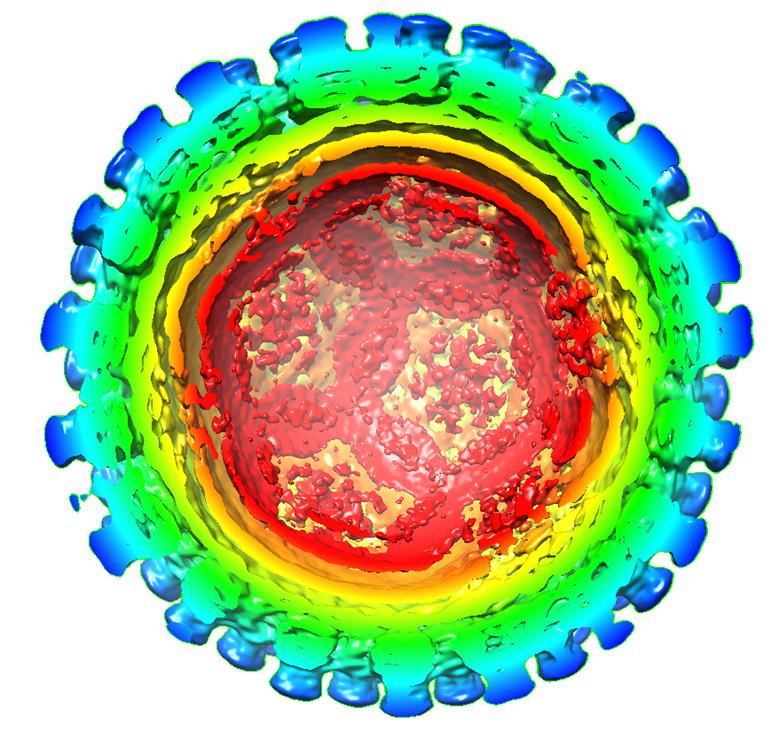Rotaviruses are a group of viruses that can infect a wide range of animals, including chicken, pigs, cattle and humans.
These viruses are mainly transmitted through the fecal-oral route. Due to their stability in the environment, rotaviruses spread through the consumption of contaminated water and food or by contact with contaminated surfaces or objects. The reassortment of the genome segments enables the virus to mutate rapidly to produce new strains. This means that rotaviruses are able to jump from animals to humans and they are therefore classified as zoonotic viruses.
In temperate climates, outbreaks of rotavirus infection occur during the winter.
Clinical signs
Rotaviruses cause gastroenteritis (inflammation of stomach and bowel). Young children and animals are most susceptible, but adults may also contract the virus.
- Fever
- Vomiting
- Diarrhoea
- Dehydration
- In some animals infection can result in growth retardation or runting and stunting syndrome
Virology
Rotaviruses belong to the Reoviridae family, genus Rotavirus of which there are eight species referred to as A, B, C, D, E, F, G, and H. Humans are primarily infected by species A, B and C, most commonly by species A. A–E species cause disease in other animals.
Like the influenza viruses, rotavirus species have a number of different strains that are determined by two outer proteins, G and P. Rotaviruses are unenveloped with a three layered capsid and double stranded RNA genome.
